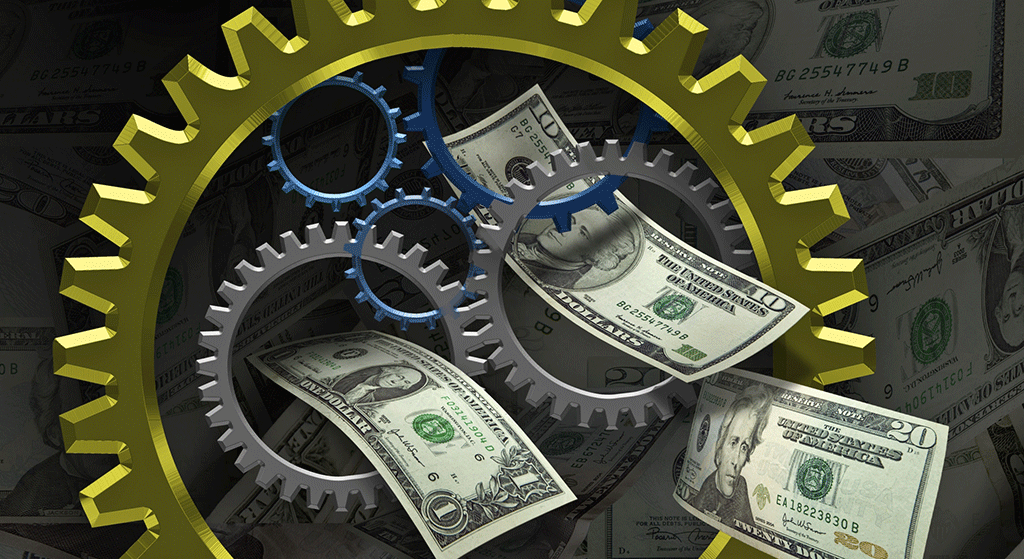“Entrepreneurs understand that there is little difference between obstacle and opportunity.“
~ Victor Kiam
Key Takeaways
- What is equipment financing, and why is it important for small businesses?
Equipment financing allows businesses to purchase necessary physical assets without depleting cash reserves. - What are the differences between equipment loans and leasing?
Loans lead to ownership after payoff, potentially requiring a down payment and possibly offering tax deductions on interest. Leasing, often with no down payment, allows for easy upgrades but doesn't result in ownership unless there's a buyout option. - What are the key considerations when choosing between loans and leasing for equipment financing?
Consider the equipment's lifespan, your financial capacity for upfront costs, the importance of owning assets, and the potential tax benefits. Leasing might suit rapidly outdated technology, while loans could be better for long-lasting equipment. - What types of equipment loans are available to small businesses?
Traditional equipment loans, SBA loans (such as 7(a) and CDC/504 programs), and loans from online lenders are primary options. Each has specific benefits, from favorable terms with SBA loans to quicker access through online lenders. - How should a business assess its needs and financial health before seeking equipment financing?
Evaluate essential equipment needs, consider the financial impact of monthly payments on cash flow, and assess the potential for down payments and additional costs. Understanding your credit score and business performance is also crucial. - What are alternative financing options for small business equipment?
Lines of credit, business credit cards, leasing directly from manufacturers or vendors, and using broker services offer alternatives to traditional loans, each with unique benefits and considerations.
As a small business owner who utilizes some type of equipment, one of the most significant decisions you'll face is how to finance this equipment that keeps your business running smoothly. Whether it's the latest tech for your startup or heavy machinery for your growing enterprise, understanding how to finance these essential assets is key to your success.
We'll take a look at different financing options, from traditional loans to innovative leasing solutions. We'll dissect the pros and cons, helping you to make an informed decision tailored to your business's unique needs.
Understanding Equipment Financing for Small Businesses
At its core, equipment financing is a means for businesses like yours to fund the purchase of physical assets necessary for operations. These assets can range from office technology and software to heavy machinery and vehicles.
- What Can Be Financed: Virtually any tangible asset that your business needs can be financed. This includes computers, office furniture, machinery, vehicles, and even specialized equipment unique to your industry.
- Why It's Essential: Equipment financing is crucial for your business growth. It enables you to acquire essential tools without depleting your cash reserves, maintaining liquidity for other critical business needs.
- The Mechanics of Equipment Financing: Typically, equipment financing involves a lender providing you with the funds to purchase the necessary equipment. In return, you agree to pay back the loan amount plus interest over a specified period. This arrangement allows you to use the equipment while paying for it in manageable installments.
- Secured Loans: Most equipment financing options are secured loans, meaning the equipment itself serves as collateral. This setup can be beneficial for your business, especially if you're still building your credit history. If you default on the loan, the lender has the right to seize the equipment.
- Leasing vs. Buying: You'll also have the option to lease equipment. Leasing can be advantageous if the equipment you need rapidly becomes outdated or if you're looking for lower upfront costs. However, unlike buying, leasing doesn't lead to ownership at the end of the term unless specified in the lease agreement.
- Tax Benefits: Did you know that equipment financing can offer tax benefits? In many cases, the interest you pay on the loan can be tax-deductible. Plus, under certain tax codes like Section 179, you might be able to deduct the cost of the equipment in the year it's purchased.
- Understanding Your Needs: Before jumping headfirst into equipment financing, it's important to assess your business needs. Consider factors like the equipment's lifespan, its role in your operations, and how it aligns with your long-term business goals.
Equipment Loans vs. Leasing: Key Differences and Considerations
As you explore small business equipment financing, two primary options emerge: loans and leasing. Both have their unique benefits and drawbacks, and the best choice for your business depends on several factors, including financial flexibility, equipment type, and long-term business plans.
Equipment Loans: Owning Your Success
- Ownership: The most significant advantage of an equipment loan is that you own the equipment outright once the loan is paid off. It becomes an asset to your business.
- Loan Terms: Equipment loans often have terms ranging from one to five years, sometimes longer, depending on the equipment's life expectancy.
- Interest Rates: The interest rates for equipment loans vary, typically between 8% to 30%, influenced by your creditworthiness and the loan's term.
- Down Payment: You might need to make a down payment, usually up to 20% of the equipment’s cost.
- Tax Benefits: Interest paid on the loan can often be tax-deductible, and you may qualify for additional deductions like Section 179.
Equipment Leasing: Flexibility and Up-to-Date Technology
- No Ownership: With leasing, you don’t own the equipment but have the right to use it. This arrangement is perfect for equipment that rapidly becomes outdated.
- Lower Initial Costs: Generally, leasing requires no down payment, reducing your initial costs.
- Upgrades: Leasing allows you to upgrade to newer equipment at the end of the lease term, keeping your business technologically current.
- Monthly Payments: Leases often have lower monthly payments compared to loans, though this can result in higher overall costs in the long term.
- Tax Implications: Lease payments can often be deducted as a business expense, providing a tax benefit.
Deciding Between Loans and Leasing
- Assessing Equipment Lifespan: If the equipment has a long useful life and won’t become obsolete quickly, a loan might be more cost-effective. For rapidly evolving tech, leasing could be more advantageous.
- Financial Analysis: Consider your business’s cash flow. Leasing may offer lower monthly payments, while loans require a higher initial investment but lead to asset ownership.
- Growth Stage of Your Business: Startups or businesses planning significant growth might prefer the flexibility of leasing, while established businesses might opt for loans to build assets.
Overview of Specific Equipment Loan Types
When you consider small business equipment financing, understanding the different types of loans available is essential. Each loan type caters to specific needs and scenarios, and choosing the right one can significantly impact your business's financial flexibility and growth.
1. Traditional Equipment Loans
- What They Are: Traditional equipment loans are what most people think of when considering equipment financing. These are loans specifically used for purchasing equipment.
- Repayment and Interest: The loan term generally aligns with the equipment's expected life, and interest rates can range from 8% to 30%, depending on your creditworthiness and other factors.
- Suitability: Best for businesses that need equipment with a long lifespan and are comfortable with a longer repayment period.
2. SBA Equipment Loans
- Types of SBA Loans: The Small Business Administration (SBA) offers several equipment loan programs, including the popular 7(a) and CDC/504 loans.
- 7(a) Loans: These are versatile loans that can be used for equipment financing, with maximum loan amounts of $5 million. They offer longer repayment periods but require a good credit score and business history.
- CDC/504 Loans: Targeted for purchasing long-term assets like equipment, these loans offer up to $5.5 million in financing. They involve a CDC and require a 10% down payment by the borrower.
- Interest Rates and Terms: SBA loans typically have lower interest rates compared to traditional bank loans, with rates influenced by market rates for U.S. Treasury issues.
3. Online Lender Equipment Loans
- Overview: Online lenders offer a more streamlined application process, often with faster approval times.
- Characteristics: These loans may have higher interest rates but are more accessible, especially for businesses with less-than-perfect credit or those requiring quick funding.
- Advantages: Best for businesses needing quick funding and those who may not qualify for traditional bank loans.
4. Leasing Agreements
- Lease-to-Own Options: Some leasing agreements include an option to purchase the equipment at the end of the lease term, offering a pathway to ownership.
- Flexibility: Leasing provides flexibility to upgrade equipment and is ideal for equipment that quickly becomes obsolete.
5. Alternative Financing Options
- Business Lines of Credit: Offers a flexible funding option, where you draw funds as needed, ideal for intermittent equipment needs.
- Business Credit Cards: Suitable for smaller equipment purchases, offering the benefit of rewards but higher interest rates.
A Look at SBA Equipment Loans
The Small Business Administration (SBA) offers specialized loan programs designed to assist small businesses in acquiring equipment. These loans are known for their favorable terms and conditions, making them an attractive option for many businesses.
1. SBA 7(a) Loan Program
- Purpose and Flexibility: The SBA 7(a) loan is the agency's primary program for helping small businesses. It's versatile and can be used for various purposes, including equipment financing.
- Loan Terms: With a maximum amount of $5 million, these loans offer terms that can be up to 10 years or more, which is typically enough to cover the lifespan of most equipment.
- Interest Rates: The rates for 7(a) loans range from 11.5% to 15%, depending on factors like loan size and term.
- Qualification Criteria: To be eligible, businesses need to meet certain requirements, such as being a for-profit entity located in the U.S., meeting SBA size standards, and demonstrating an ability to repay the loan.
- Application Process: The process can be longer than other financing options, but SBA Express loans within the 7(a) program offer faster funding times, albeit with a lower borrowing maximum of $500,000.
2. SBA CDC/504 Loan Program
- Specific Use: This program is particularly tailored for major fixed asset purchases, such as equipment and real estate.
- Loan Structure: It involves collaboration between a Certified Development Company (CDC), a lender, and the borrower. The CDC finances up to 40% of the project costs, the lender covers up to 50%, and the borrower contributes 10%.
- Amount and Terms: The maximum loan amount can go up to $5.5 million, with terms extending up to 20 years. The equipment serves as collateral for these loans.
- Interest Rates: Rates are tied to the market rate for 5-year and 10-year U.S. Treasury issues, typically offering lower rates than conventional bank loans.
- Eligibility and Process: Businesses must have a net worth of less than $15 million and an average net income of less than $5 million after taxes for the preceding two years. The approval process can take longer, ranging from 5 to 8 weeks or sometimes more.
Alternative Financing Options: Lines of Credit and Credit Cards
Apart from traditional loans and leasing, small businesses have other avenues for equipment financing, namely business lines of credit and credit cards. These options provide flexibility and can be particularly useful for certain types of purchases or business situations. However, they come with their own sets of considerations, such as higher interest rates for credit cards and the need for disciplined financial management. These options can be part of a broader financial strategy for equipment financing, complementing loans, and leasing by providing additional liquidity and flexibility.
Business Lines of Credit
- Flexibility in Usage: A line of credit offers flexible access to funds, allowing you to draw money as needed up to a certain limit. This is particularly useful for ongoing or unexpected equipment needs.
- Interest Rates and Limits: Interest rates for lines of credit can range from 7% to 36%, and credit limits typically vary between $10,000 and $100,000.
- Repayment Terms: Only the borrowed amount accrues interest, and you can repay and redraw funds as needed, making it a revolving form of credit.
- Qualifications: Qualification criteria include your business’s performance, operational duration, and revenue figures. Approval processes are usually quick, providing timely access to funds.
- Best Use Case: Ideal for businesses that face intermittent equipment needs or require flexibility in funding amount and timing.
Business Credit Cards
- Convenience and Rewards: Business credit cards offer a convenient way to finance smaller equipment purchases, and many cards come with rewards like cash back or travel points.
- Interest Rates and Credit Limits: They typically have higher interest rates, ranging from 11% to 24%, with lower credit limits compared to other financing methods (Digital Enterprise).
- Fast Approval and Flexibility: Credit cards allow for quick, flexible funding, but it's important to manage balances effectively to avoid high interest costs.
- Best Suited For: Best for smaller or short-term equipment needs and businesses that can benefit from the additional rewards and flexibility offered by credit cards.
Some Pros and Cons of Equipment Financing
Pros of Equipment Financing
- Preservation of Capital: Financing allows you to retain cash for other business uses, ensuring you're not depleting your reserves.
- Ownership and Asset Building: With loans, the equipment becomes a business asset upon payoff, contributing to your company’s net worth.
- Tax Advantages: Interest on equipment loans can be tax-deductible, and certain purchases may qualify for additional deductions under tax codes like Section 179.
- Flexibility in Terms: Depending on the lender and your creditworthiness, you can negotiate the terms, including the loan duration and repayment schedule.
- Improved Cash Flow Management: Structured monthly payments allow for easier budgeting and cash flow management.
Cons of Equipment Financing
- Interest and Higher Long-Term Cost: Financing involves paying interest, which can make the total cost of equipment more expensive over time.
- Risk of Asset Seizure: In case of default, the financed equipment, which serves as collateral, can be seized by the lender.
- Depreciation: As with any asset, equipment can depreciate over time, potentially leaving you paying off equipment that’s declined in value or become obsolete.
- Credit Impact: Taking out a loan impacts your credit score. Poor management of loan repayments can negatively affect your business’s credit rating.
- Down Payments and Additional Fees: Some loans require down payments or have additional fees, which can be a barrier for some businesses.
Assessing Your Business Needs and Financial Health
Before you dive into equipment financing, you should conduct a thorough assessment of your business needs and financial health. This evaluation will not only guide you in choosing the most appropriate financing option but also ensure that the decision supports your business's overall growth and stability.
Understanding Your Business's Equipment Needs
- Identify Essential Equipment: Determine the equipment critical for your operations. Consider factors like the equipment's role in your business and its impact on productivity.
- Evaluate Equipment Lifespan: Assess how long the equipment will remain useful. For rapidly evolving technology, leasing might be more beneficial.
- Growth and Scalability: Consider how the equipment will fit into your future business plans. Will it scale with your growth, or will it need to be upgraded?
Assessing Your Financial Position
- Review Your Credit Score: Your credit score will significantly influence your financing options. Higher scores typically result in better loan terms and interest rates.
- Analyze Cash Flow: Examine your business's cash flow to determine your ability to make regular loan payments. Consistent and robust cash flow is a key factor in securing favorable financing terms.
- Consider Down Payment and Additional Costs: Be prepared for any required down payments or additional fees associated with financing. Ensure these costs won't strain your business finances.
Planning for Repayment
- Budgeting for Monthly Payments: Incorporate the expected loan or lease payments into your budget. Consider how these payments will affect your cash flow and financial planning.
- Contingency Planning: Have a plan for financial downturns or unexpected challenges. Ensure that you can still manage payments in such scenarios to avoid default.
Flexible Financing and Enhanced Productivity Through Equipment Financing
Flexible equipment financing can be a game-changer for your business, offering customized solutions that enhance productivity and keep you at the forefront of your industry. It's about finding the right partner who understands your business and can provide the financial tools needed for success.
The Role of Flexible Financing in Business Growth
- Customized Financing Solutions: Equipment financing providers, especially those like Golden Gate Equipment Finance, specialize in tailoring financing solutions to fit your specific business needs.
- Adapting to Business Size and Requirements: Whether you’re a small startup or a large enterprise, the right financing plan can align with your budget and business goals, providing the necessary support for growth.
Enhancing Business Productivity and Efficiency
- Access to Advanced Equipment: Financing enables you to acquire state-of-the-art equipment, which can be pivotal in improving operational efficiency and productivity.
- Staying Competitive: In rapidly evolving industries such as technology, healthcare, and manufacturing, having the latest equipment is crucial. Equipment financing allows you to update your tools without significant upfront investments.
The Equipment Financing Process
- Consultation and Evaluation: Work with financing experts who understand your business and can guide you in choosing the best financing option.
- Application and Documentation: The financing process typically involves a streamlined application and documentation process, ensuring timely approvals and minimizing delays.
- Acquisition of Equipment: With financing secured, you can proceed to acquire the equipment necessary to drive your business forward.
The Advantage of a People to People Approach
- Personalized Service: Many financing providers adopt a People to People (P2P) approach rather than traditional Business to Business (B2B), offering a more personalized service.
- Understanding Unique Business Needs: This approach ensures that the financing solutions provided are closely aligned with the unique requirements and goals of your business.
Obtaining Equipment Financing: Options and Processes
Finding the right source for equipment financing is as important as selecting the right type of financing. Each source offers different advantages, terms, and conditions.
Online Lenders
- Accessibility and Speed: Online lenders are known for their streamlined application processes and quick approval times, often providing funding within 24 hours.
- Suitability: They are particularly useful for businesses that may not meet the stringent requirements of traditional banks or need rapid access to funds.
- Consideration: While convenient, these loans can have higher interest rates and shorter terms compared to traditional bank loans.
Banks and Credit Unions
- Favorable Terms: Traditionally, banks and credit unions offer equipment loans with lower interest rates and longer repayment terms.
- Eligibility Criteria: They typically require strong personal credit, several years in business, and solid financials to qualify.
- Process: The application process might be more comprehensive and time-consuming than with online lenders.
SBA Lenders
- Government-Backed Loans: SBA lenders offer loans backed by the Small Business Administration, known for their favorable terms, including long repayment periods and low interest rates.
- Variety of Programs: They offer different loan programs, such as the 7(a) and CDC/504, each with its own set of advantages.
- Eligibility: To qualify, businesses usually need to meet certain criteria set by the SBA, which can include credit score, operational history, and financial health.
Equipment Manufacturers and Vendors
- Direct Financing: Some equipment manufacturers and vendors offer financing options directly to purchasers.
- Convenience: This can be a convenient option as it allows you to purchase and finance equipment in one place.
- Comparison: It's important to compare these offers with other financing sources to ensure you are getting the best deal.
Broker Services
- Expert Guidance: Brokers can help navigate the complex world of equipment financing by matching you with suitable lenders based on your business needs and financial situation.
- Wider Options: They often have access to a wide range of lenders, increasing your chances of finding a favorable financing solution.
Final Thoughts
The world of equipment financing can be challenging, but with the right information and a strategic approach, it can lead to substantial growth and success for your small business. Remember, the goal of equipment financing is not just to acquire new assets but to leverage them in a way that propels your business forward.

See you out there!



